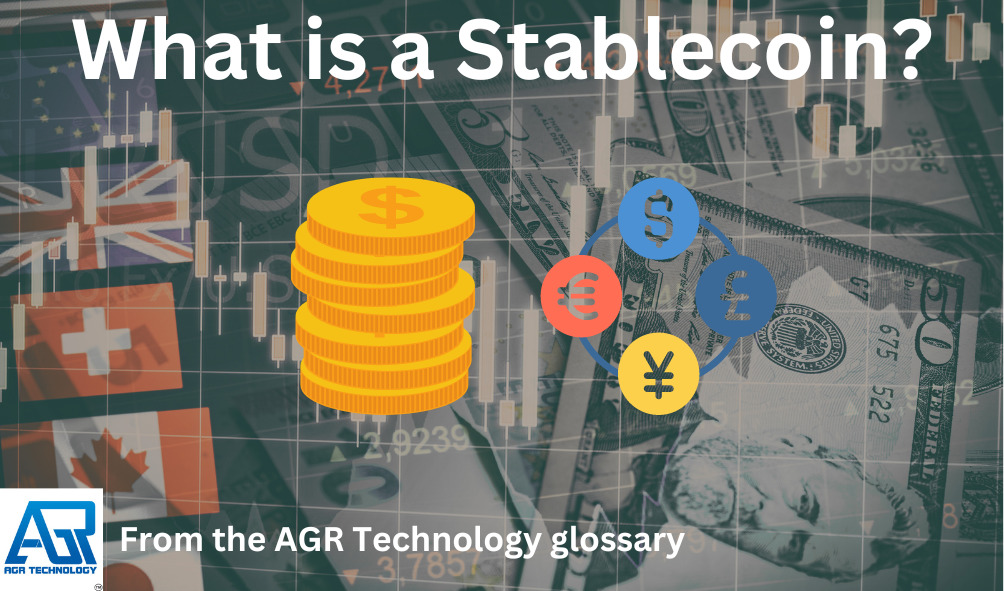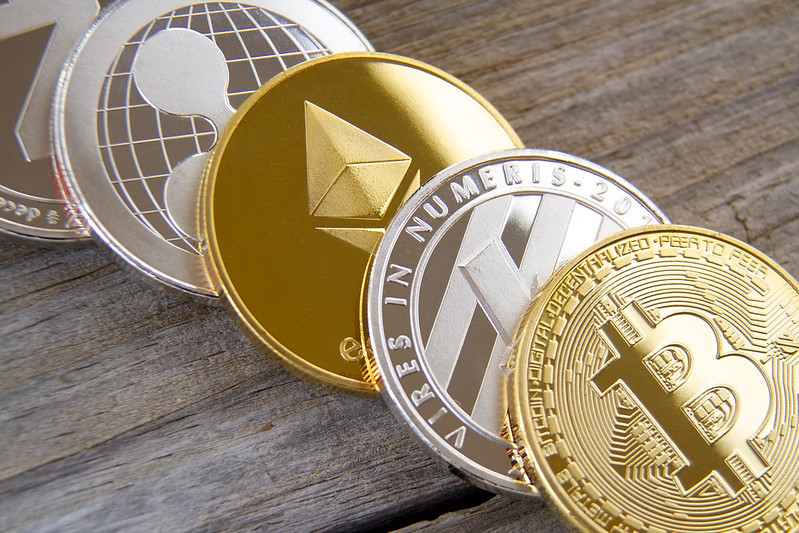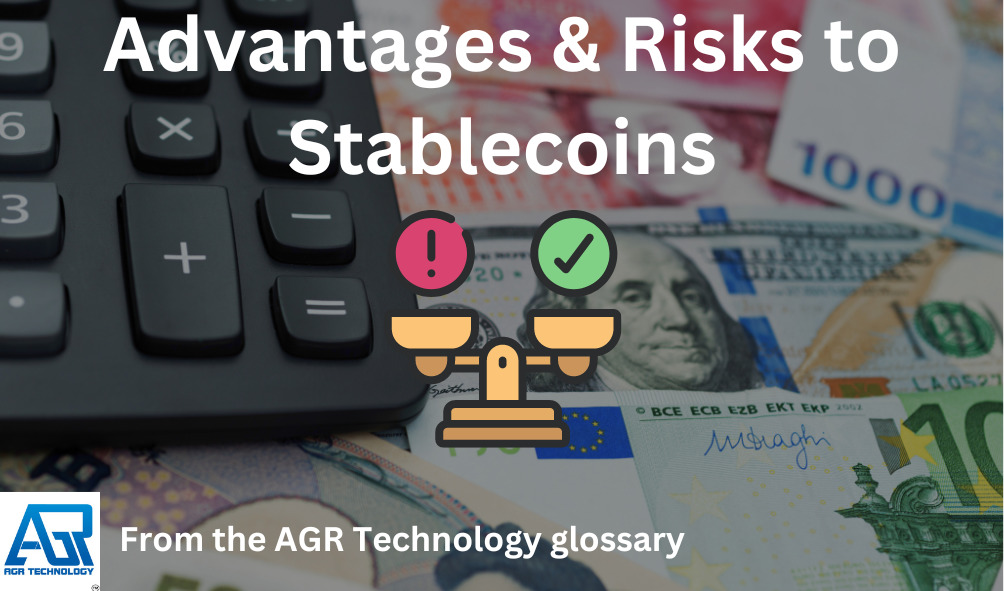Introduction

Stablecoins are a sort of cryptocurrency in which the digital asset’s value is expected to be tied to another asset, such as fiat money, exchange-traded commodities, or another cryptocurrency. In principle, 1:1 backing by a reference asset might cause a stablecoin’s value to mirror the value of the peg, but issuers have not been proven to keep significant reserves to sustain a stable value in practice.
Stablecoins have a variety of uses, such as payments, and are more likely to keep their value than volatile cryptocurrencies.
Some examples of well-known Stablecoin projects include USD Coin and BUSD which was started by Binance.
Related articles from the blog:
Best Cryptocurrency exchanges to buy Crypto & Stablecoins in Australia
Top Exchanges to Buy Bitcoin & Other Crypto Assets in New Zealand
Top places to buy and sell Cryptocurrencies in Dubai and the UAE
List of our favorite Cryptocurrency exchanges that can be used in Norway
Top Cryptocurrencies to buy right now (interactive tool with updated price tracking)
Apps & online platforms to help you get started with Crypto in Hong Kong
Best Cryptocurrency applications for Taiwan users
Platforms Singapore users and investors can use to trade and buy Cryptocurrencies
Fiat-backed approaches (backed by a traditional currency such as USD, Euro, etc)

Reserve-backed stablecoins are digital assets that are supported by other assets and are unlikely to fall below the underlying physical asset’s value owing to arbitrage. The value of fiat-backed stablecoins is determined by the value of the underlying currency, which is held by a third-party-regulated financial firm. Cryptocurrencies backed by fiat money are the most widespread and were the market’s first stablecoins.
Their value is pegged to one or more currencies (most commonly the US dollar, euro, and Swiss franc) in a fixed ratio; the value connection is realized off-chain, through banks or other types of regulated financial institutions that serve as depositaries of the currency used to back the stablecoin; and the amount of the currency used to back the stablecoin should reflect the stablecoin’s circulating supply.
National Australia Bank stated in January 2023 that it would launch the AUDN, an Australian Dollar fiat-backed stablecoin, for facilitating cross-border financial transactions and trading carbon credits.
Stablecoins backed by commodities such as Gold or Silver

The following are the primary characteristics of commodity-backed stablecoins:
- Their value is linked to one or more commodities and redeemable for those commodities (more or less) on demand;
- There is an implied or explicit commitment to redeem, made by unregulated people, agorist enterprises, or even regulated financial institutions;
- The amount of commodity used to back the stablecoin should correspond to the stablecoin’s circulating supply.
Holders of commodity-backed stablecoins can redeem their stablecoins at the conversion rate to acquire possession of the underlying assets, subject to the conditions in existence at the time of redemption regarding timing and amount. The cost of holding and protecting the commodity underpinning is the cost of sustaining the stablecoin’s stability.
Cryptocurrency based approaches

Cryptocurrency-backed stablecoins are issued with cryptocurrencies as collateral, which is conceptually similar to fiat-backed stablecoins. The main difference between the two designs is that the cryptocurrency or crypto asset used to support this sort of stablecoin is done on the blockchain, using smart contracts in a more decentralized method.
These characteristics include the stablecoin’s value being collateralized by another cryptocurrency or a cryptocurrency portfolio, the peg being executed on-chain via smart contracts, the supply of stablecoins being regulated on-chain, and price stability achieved through the introduction of supplementary instruments and incentives.
The technical implementation of this sort of stablecoin is more complex and diversified than that of fiat-collateralized stablecoins, which increases the danger of exploits due to faults in smart contract code. The change in the value of the collateral and the dependency on extra instruments are potentially problematic aspects of this sort of stablecoin. Havven, DAI, and other live stablecoin projects are examples of this category.
Basis, a stablecoin project that had attracted over $100 million in venture capital funding, shut down in December 2018, citing regulatory issues in the United States. Diem (previously Libra) was acquired by Silvergate Capital after being abandoned by Facebook/Meta.
Risks & advantages

Potential advantages
Potential for greater stability and the best of both worlds (traditional & digital currencies)
Stablecoins, which can interact with blockchain-based apps, can be more stable than Cryptocurrencies and can bring some of the benefits of fiat currencies.
Costs
They are less expensive to use and provide larger returns than standard savings accounts. Stablecoin holders can take out loans backed by their coins and insure their crypto assets.
Cross border payments
Stablecoins make cross-border payments faster and cheaper because they are generally accepted and liquid.
Ability to be backed by commodities
Commodity-backed stablecoins make precious metals and other commodities more convenient to transport, divide, and lend for interest.
Potential risks
Lack of regulations
According to Nellie Liang, Under Secretary of the Treasury for Domestic Finance, who testified before the Senate Banking Committee, the rapid expansion of the stablecoin market capitalization and its potential for financial services innovation necessitates immediate congressional regulation.
Lack of transparency
Tether is the world’s largest market capitalization stablecoin at the moment. It has been accused of failing to deliver audits for reserves used to collateralize the amount of USDT stablecoin generated. Tether has now given assurance reports on USDT support, but considerable speculation remains.
De-pegging
Many projects can develop a product and refer to it as a stablecoin. As a result, despite their name, many stablecoins have historically lacked stability due to the digital assets’ capacity to be built to a variety of standards. Stablecoins like TerraUSD, USDD, DEI, and others all fell to zero in 2022.
Conclusion
We hope you found this resource page useful If this guide helped you be sure to share it with your friends and family and check out our software, business services, and videos for more.
Related links and content:
What companies and people are involved in the Crypto sector
Financial technology (FinTech)
DApp (Decentralized Application)
What is a DLT and how does it work?
Digital Wallets / Smart Wallets
What is Tokenization and how does it fit into Blockchain and Cryptocurrencies?
What is a fork of a Cryptocurrency project?
How to easily buy Bitcoin in Australia
What is the concept of Web 3.0 – Explained
Privacy Coins Explained (Definition, History & Concept)
Electronic Funds Transfer Definition
Comparing different loan platforms and companies for Australians SMBs
Blockchain Explorer Definition
What is Cryptocurrency Market Analysis?
What are Initial Exchange Offerings (IEOs)
Different platforms that enable you to receive Cryptocurrency payments on your website
Summary of some top CFD trading platforms for the UAE/Dubai market
Net worth calculator – web based tool
Mortgage affordability calculator – online web tool
CFD trading platforms in Australia
Top-rated Cryptocurrency exchanges & applications for India
Crypto exchanges for South Africans
Some of the top-rated Cryptocurrency exchanges & apps for Saudi Arabia
Some leading best small business loan/financing providers for Perth businesses
Top-rated Alternatives to Etoro for Australian CFD traders
Top Alternatives to Swyftx for Australian Crypto users
Some of the best Cryptocurrency exchanges/apps for Canadians
Different commercial loan brokers for Melbourne businesses
Collection of some of the best day trading platforms for Australians
ICO Marketing Solutions to help brands capture more online reach
CMC Markets Alternatives for Australian end-users wanting to start trading
Coinspot alternatives platforms Australians wanting to get started with Cryptocurrencies
Services to help you recover lost Crypto from your devices
List of some top Etoro alternatives for Australian forex traders
Sydney Business loans – lending for small to large businesses
What to look for when choosing a neobank app
Web3 Marketing Services By AGR Technology to help brands reach more users
Web3 Software Development Services By AGR Technology
NFT Digital Marketing Services By AGR Technology
Simple Guide Showing Australians how to buy Cryptocurrency
Earn interest on your Cryptocurrency assets
How to buy Bitcoin or other Cryptocurrency
Stock market trading software Australia
Source(s) cited:
(2018). Stablecoin [Online]. Wikipedia. Available at: https://en.wikipedia.org/wiki/Stablecoin (Accessed: 27 April 2023).
https://creativecommons.org/licenses/by-nd/2.0/
Money, Images. “Money from around the world” Flickr, 16 June 2011, www.flickr.com/photos/59937401@N07/5856660723/in/photolist-9VwVc2-9VAATT-9kKVF2-9kKWaR-9VzRWs-9VCvQE-9VzUw7-9VzEM8-9VzCaq-9VzDbs-9VzNQJ-9VCugY-aBA6JJ-eyPzvt-avQZZG-9vMZ2Z-8yPX8J-8qXBwc-bDyz2o-cMe35j-9VzJDQ-cQ6iTQ-cQ6iv7-cQ6iLq-dMNVXG. Accessed 27 Apr. 2023.
https://creativecommons.org/licenses/by/2.0/
“Row of cryptocurrency coins.” Flickr. September 4, 2018. Accessed April 27, 2023. https://www.flickr.com/photos/quoteinspector/43567562765.
“Investigating the impact of global stablecoins” 17 Oct. 2019, www.bis.org/cpmi/publ/www.bis.org/cpmi/publ/d187.pdf. Accessed 28 Apr. 2023.
USD Coin. Wikipedia. https://en.wikipedia.org/wiki/USD_Coin. Published April 7, 2020. Accessed April 28, 2023.
Catalini, C. (2021, August 10). Stablecoins and the Future of Money. https://hbr.org/2021/08/stablecoins-and-the-future-of-money
https://cointelegraph.com/learn/stablecoins-101-what-are-crypto-stablecoins-and-how-do-they-work. Accessed April 28, 2023.
[Online]. Available at: https://www.banking.senate.gov/imo/media/doc/Liang%20Testimony%202-15-22.pdf (Accessed: 9 December 2023).
![logo-new-23[1] logo-new-23[1]](https://agrtech.com.au/wp-content/uploads/elementor/thumbs/logo-new-231-qad2sqbr9f0wlvza81xod18hkirbk9apc0elfhpco4.png)